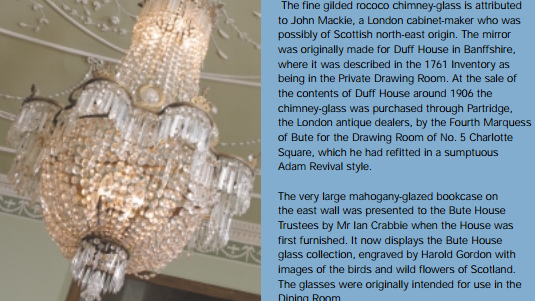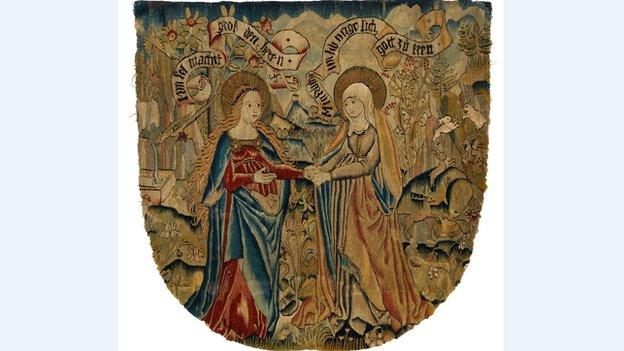Inquiry into Bute House chandelier 'loot' claims
- Published

Bute House has been the residence of Scottish secretaries and first ministers since 1970
An inquiry has begun into whether a chandelier in the first minister's official residence was looted by Nazis during World War Two.
The drawing room chandelier is said to have been found in 1945, abandoned in a street in northern Germany.
However, a report by Holocaust research organisation the Simon Wiesenthal Centre casts doubt on its provenance.
The Scottish government is now making inquiries with the National Trust for Scotland, which owns Bute House.
The four-storey Georgian house at 6 Charlotte Square, in the heart of Edinburgh, was acquired by the Treasury in 1966 from the Bute family in lieu of death duties.
It passed to the National Trust for Scotland and since 1999 has been the official residence of the First Minister of Scotland.
According to a 2012 Scottish government guidebook, the elaborate drawing room chandelier was found in the German town of Cleves by English interior designer Felix Harbord who helped Lady Bute with the decoration of her family homes.
It said: "One day he came upon this chandelier abandoned in one of the streets of Cleves and had it packed in empty munitions boxes, which he addressed to No 6 Charlotte Square.
"With the help of Edinburgh antique dealers, Lady Bute traced suitable replacements for the missing pieces of glass and successfully assembled and installed the light fitting in the Drawing Room at Bute House."

A 2012 Scottish government guidebook says the chandelier has a 'fascinating history'
However, it has emerged that a 2008 report by the Simon Wiesenthal Centre is sceptical about the account, suggesting it may have been "looted from the British collecting point at Schloss Celle, or it may be an object looted from legitimate German ownership".
By the late summer of 1945, all the looted works of art that had been retrieved in the British zone of occupation were transferred to a permanent collecting point at Schloss Celle, near Brunswick.
A Scottish government spokeswoman said it would try to clarify the previous ownership of the chandelier.
She said: "The Simon Wiesenthal Centre report raises questions over how the Bute House drawing room chandelier came to be brought to Scotland and into the ownership of the Bute family.
"We will discuss this with the National Trust for Scotland, which owns the property and most of the fittings, including the chandelier, to clarify if information on the provenance of the chandelier is contained in the trust's archives."
The National Trust for Scotland said the chandelier and the contents of the property were gifted some 50 years ago.
It said it was unclear how much information could be gained on the provenance of the chandelier.
A statement said: "We will pursue this with the Bute House trustees, who have been legally responsible for the supervision of the property since 1966."
The issue of looted artworks and antiquities has come under scrutiny in Scotland after Glasgow City Council last week agreed to pay compensation to the legitimate owners of a tapestry which is part of the Burrell Collection.
The tapestry had been acquired by Sir William Burrell in 1938, just before the outbreak of World War Two.
- Published13 August 2015
